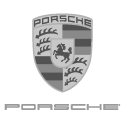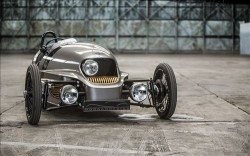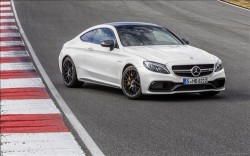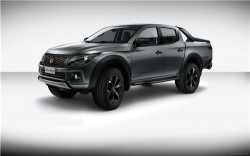- 911 Carrera and Carrera S (2009)
- 911 Turbo (2008)
- 911 Turbo Cabriolet (2008)
- 911 GT2
- 911 Targa 4 / 4S (2008)
- Boxster S (2008)
- Cayenne (2008)
- Cayenne GTS (2008)
- Cayenne Turbo S (2009)
- Cayman (2008)
- Cayman S (2008)
 Porsche cars have a virtually untarnished reputation and are considered
among the finest performance vehicles in the world. It's a reputation
that's well-deserved. With razor-sharp handling and power aplenty,
Porsche vehicles offer a driving experience like no other. It's little
wonder that, for many, the marque has come to define the sports car
category. For years, the only Porsches available were sleek sports
cars, but the manufacturer recently expanded its lineup to include
other types of vehicles.
Porsche cars have a virtually untarnished reputation and are considered
among the finest performance vehicles in the world. It's a reputation
that's well-deserved. With razor-sharp handling and power aplenty,
Porsche vehicles offer a driving experience like no other. It's little
wonder that, for many, the marque has come to define the sports car
category. For years, the only Porsches available were sleek sports
cars, but the manufacturer recently expanded its lineup to include
other types of vehicles.
The brand has its roots in the Porsche Engineering Office, founded in
Stuttgart, Germany, by Ferdinand Porsche in 1931. Porsche brought with
him years of experience as an automotive engineer; in the '20s, while
employed with Daimler, his skill was tapped to create Mercedes' iconic
SS and SSK sports cars. Porsche has long had close ties with
Volkswagen, and the first Porsche vehicles were small two-seat sports
cars that were largely based on VW chassis. From 1948-'50, most of
these early Porsche cars (the brainchild of Porsche and his son Ferry)
were actually built in Austria before production was switched to
Zuffenhausen, Germany. Ferdinand's first real production car was the VW
Beetle, so it was no surprise that his sports cars used those
components and had their air-cooled engine mounted in the rear.
The 1950s saw the birth of two icons, the 356 Speedster with its
low-cut windshield and the lightweight, midengined 550 Spyder. Both
cars helped Porsche rack up a multitude of wins on the racetrack. In
the mid-'60s, the 356 made way for the revered 911. Powered by an
all-new six-cylinder engine, the coupe scored two consecutive wins at
Monte Carlo. Following in the footsteps of its predecessors, the 911's
air-cooled flat-six engine was located in the rear of the vehicle.
By the time the '70s rolled around, Porsche had introduced the 914 (the
"affordable" Porsche with a midengine design and a targa top), the
mighty 911 turbo, the disrespected 924 (powered by a weak
front-mounted, water-cooled inline four) and the flagship 928
(front-mounted V8, four-seat coupe). The '80s saw the birth of the 956,
a car that went on to become the most successful racecar of all time.
The twin-turbo, all-wheel-drive 959 was also launched; it became the
first sports car to win the Paris-Dakar Rally and the street version
could hit nearly 200 mph. The athletic 944 debuted in 1983, as did a
convertible version of the 911, something that had been missing for
some years. The '80s also saw the rebirth of the 924, now with some
muscle courtesy of the 944's strong-for-the-time (147-horsepower)
inline four.
By the early 1990s the 928 had been discontinued and the 944 was
replaced by the similar 968. Because of a lack of dynamic product and a
tough market climate, Porsche was suffering financially. The company's
savior, the Boxster, debuted in 1997 and brought back the spirit of the
old 550 Spyder. In 2003, Porsche did what purists considered a sin as
the company brought an SUV, named Cayenne, to the market. However, once
those enthusiasts discovered the Cayenne's sporting performance
(especially in 450-hp turbo form) all was forgiven. Two years later,
Porsche brought out the ferocious (605-hp) Carrera GT supercar.
Throughout its history, Porsche has exhibited amazing resilience,
weathering changes in the economic climate and remaining fully
independent from any larger automaker. Today, the ever-robust company
continues to be known for making vehicles that raise the bar when it
comes to performance.
Views: 44854
[Source: Edmund's ]
Latest Wallpapers
Following is the list of recent pictures updates on our site.
DieselStation Social
Cars You May Like




















